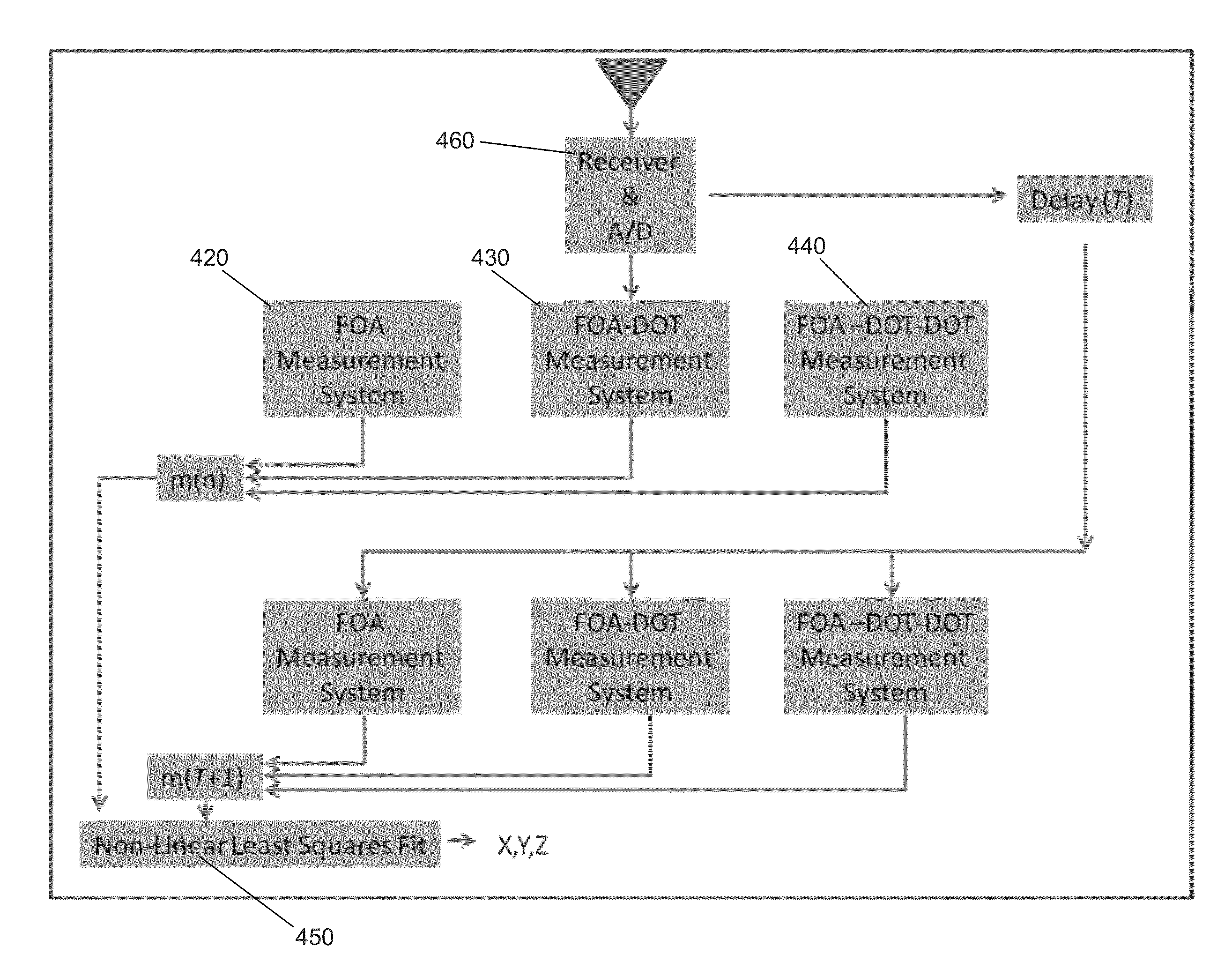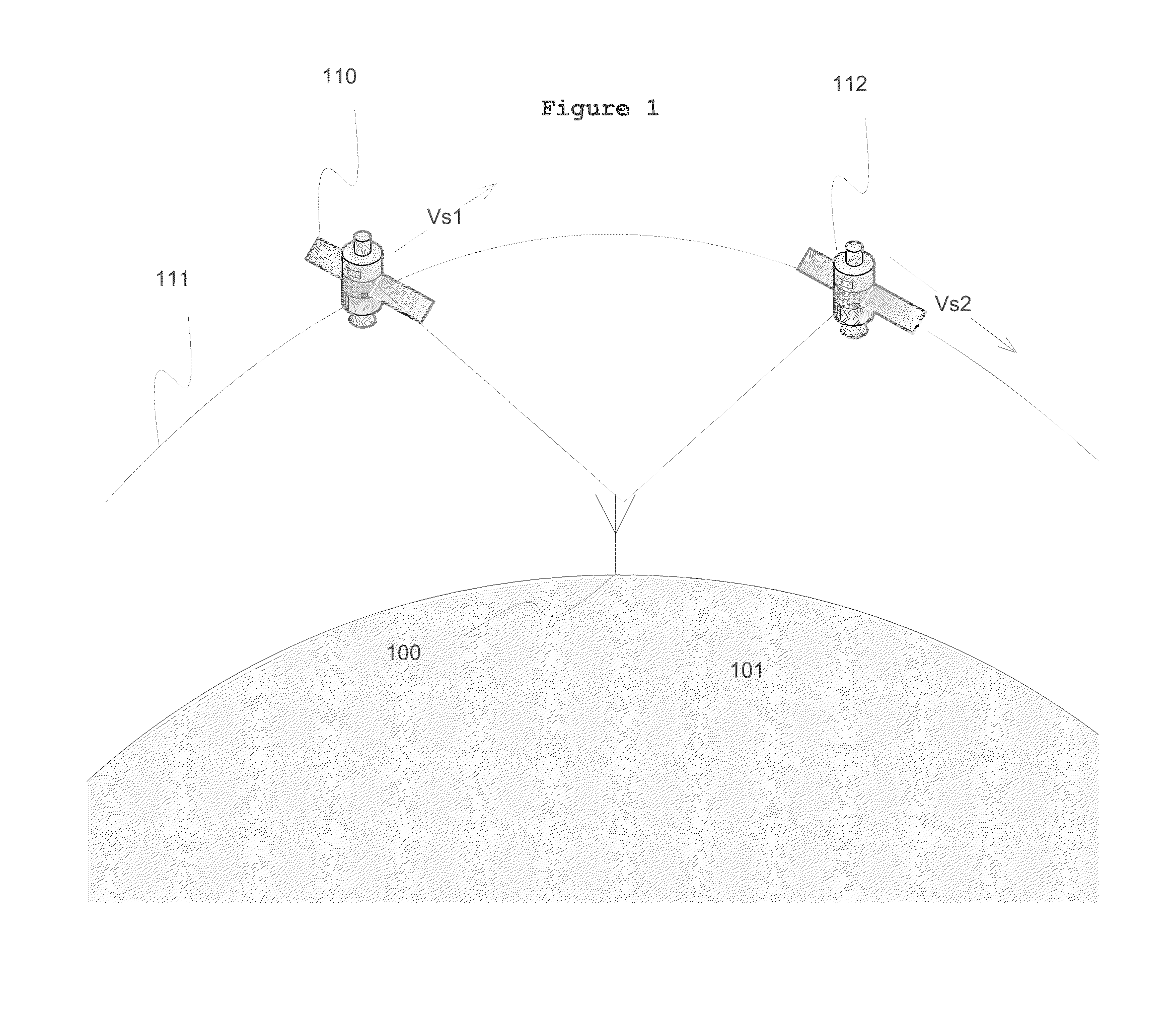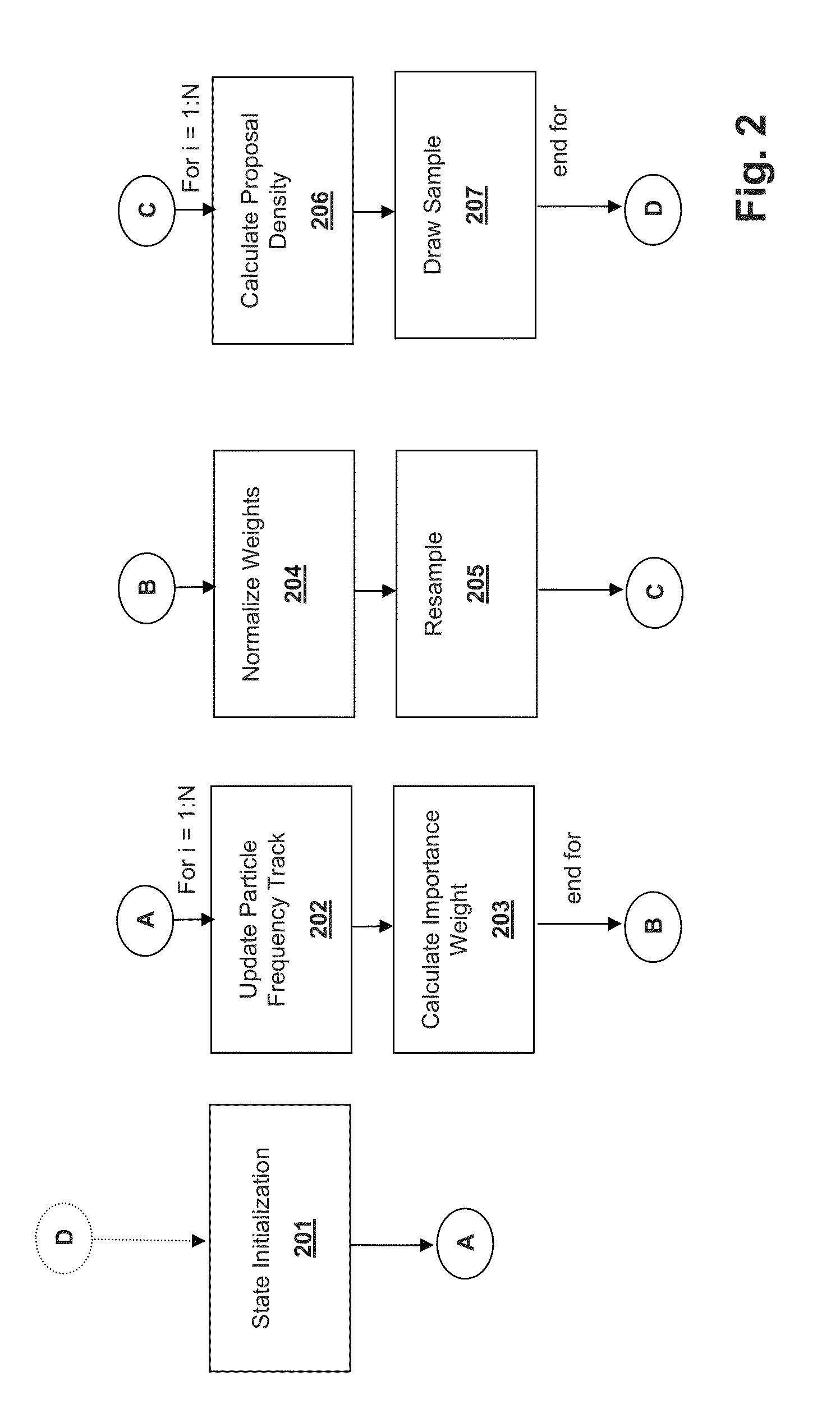Machine and process for self localization using doppler
a technology of self-localization and doppler, which is applied in the field of localization of radio frequency (“ rf”) receivers, can solve the problems of large localization error if not corrected, and require at least two or more simultaneous emitters. achieve the effect of rapid localization of a single receiver and more robust and accurate solutions
- Summary
- Abstract
- Description
- Claims
- Application Information
AI Technical Summary
Benefits of technology
Problems solved by technology
Method used
Image
Examples
example 1
[0097]The performance of the above described DPF algorithm was examined for Doppler data simulated from a recorded UAV path, where the UAV attempts to determine the position of a 500 MHz RF emitter device in a 1 km2 vicinity. Note that Example 1 illustrates simulated experimental data tracking an emitter with a platform having a known position and velocity. However, given that this experimental data is closely related mathematically to the problem of self-localization, the illustration provided by Example 1 is helpful in understanding self-localization. The UAV's flight path 501 over a collection period of 3 minutes (180 s) is shown in FIG. 5. As shown, the UAV starts at approximately [0;−600] x-y point with a height of 150 meters and travels at a relatively slow, constant velocity range of from about 8 to about 18 m / s (i.e., about 20-40 mph). The star 502 denotes the position of the target RF emitter, which is placed outside and about 0.5 km from the center of the UAV flight path.
[...
example 2
[0104]Referring to FIG. 10, the performance of a DPF algorithm according to the invention is examined for the case where a target emitter 1302 is located inside the UAV's flight loop 1001. Note that Example 2 illustrates simulated experimental data tracking an emitter with a platform having a known position and velocity. However, given that this experimental data is closely related mathematically to the problem of self-localization, the illustration provided by Example 2 is helpful in understanding self-localization. As shown, the star 1002 denotes the position of the target RF emitter and the line 1001 shows the UAV's flight path over a collection period of 3 minutes (180 s). Similar to Example 1, the emitter comprises a variable 500 MHz RF carrier device having the same drift shown in FIG. 6. The UAV starts at approximately [0;−600] x-y point with a height of 150 meters and travels at a relatively slow velocity range of from about 8 to about 18 m / s (i.e., about 20-40 mph).
[0105]Re...
example 3
[0108]Finally, FIG. 13 compares the best potential performance of the two-sensor FDOA method 1301 to the single-sensor FOA method 1302 by comparing their respective CRLBs. Note that Example 3 illustrates simulated experimental data tracking an emitter with a platform having a known position and velocity. However, given that this experimental data is closely related mathematically to the problem of self-localization, the illustration provided by Example 3 is helpful in understanding self-localization. As shown, the geometry was the same as described in FIG. 5, except that the FDOA required a second collector placed at the location of [600;−600; 0]. Both bounds assumed a measurement error variance of 1 Hz2. The results show that FDOA converges slightly faster, but that the performances of the two techniques at the end of the three minute collection are roughly comparable. Note also that the bounds assume that both FDOA sensors have absolute frequency measurements precise to within a H...
PUM
 Login to View More
Login to View More Abstract
Description
Claims
Application Information
 Login to View More
Login to View More - R&D
- Intellectual Property
- Life Sciences
- Materials
- Tech Scout
- Unparalleled Data Quality
- Higher Quality Content
- 60% Fewer Hallucinations
Browse by: Latest US Patents, China's latest patents, Technical Efficacy Thesaurus, Application Domain, Technology Topic, Popular Technical Reports.
© 2025 PatSnap. All rights reserved.Legal|Privacy policy|Modern Slavery Act Transparency Statement|Sitemap|About US| Contact US: help@patsnap.com



